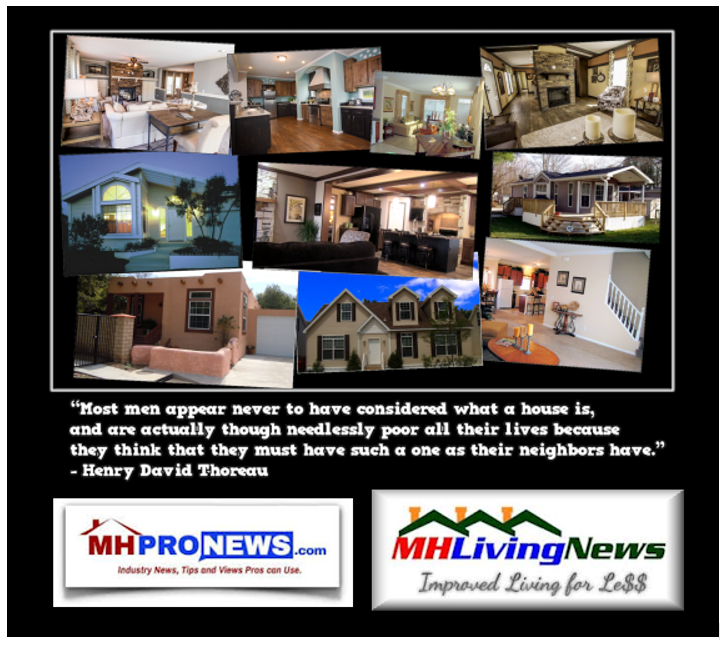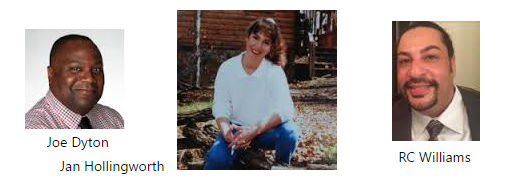“…lower rates of crime than you would expect, because they had pride of ownership…”
– William P. McCarty, PhD – University of Illinois at Chicago, Department of Criminology, Law and Justice
“What may be surprising to real estate licensees is the level of energy efficiency available …”
– Harold Hunt, PhD – Real Estate Center at Texas A&M University
“That box is going to be built better than any [conventional] home, unless it’s built to hurricane standards.”
Tim Reinhold, PhD – senior vice president of research and chief engineer for the Insurance Institute for Business & Home Safety (IBHS)
The praise by numerous independent researchers is impressive. At a time when rents and conventional housing costs are soaring, a national trade publisher is saying, “The solution to the affordable housing crisis is hiding in plain sight.”
“Bloomberg recently joined those praising our homes, but they suggested we ought to rebrand as tiny houses. Well, you can get small homes from our industry, but we also produce mid-sized-to-larger homes that the working class, the upwardly mobile and frugal millionaires all love,” said L. A. “Tony” Kovach, publisher of MHProNews. “Maybe we should rebrand as eGreenHomes or CUBEs?” ©
The industry-leading professional-and-investor focused trade journal is celebrating its 7th year of publishing.
“Too many missed Shakespeare’s meaning when he said that a rose by any other name would still smell as sweet,” Kovach said with a wry smile. “On our public focused MHLivingNews.com sister-site, our banner proclaims – “Showcasing Stronger, Smarter, Safer, Stylish, Shelter Savings” – and the unexaggerated facts prove that’s true.”
“Imagine engineered homes, that meet or exceed strict federal safety, energy and performance standards, built to the nation’s only preemptive code for permanent homes,” Kovach explains. “By using the same proven systems that keep costs down on cars, smartphones, clothing or other produced products, you save on labor, time, have about 30% less waste, can buy in bulk and thus save money.”
“And the U.S. Census Bureau and Government Accountability Office state our homes are about half the cost of conventional construction,” he adds.
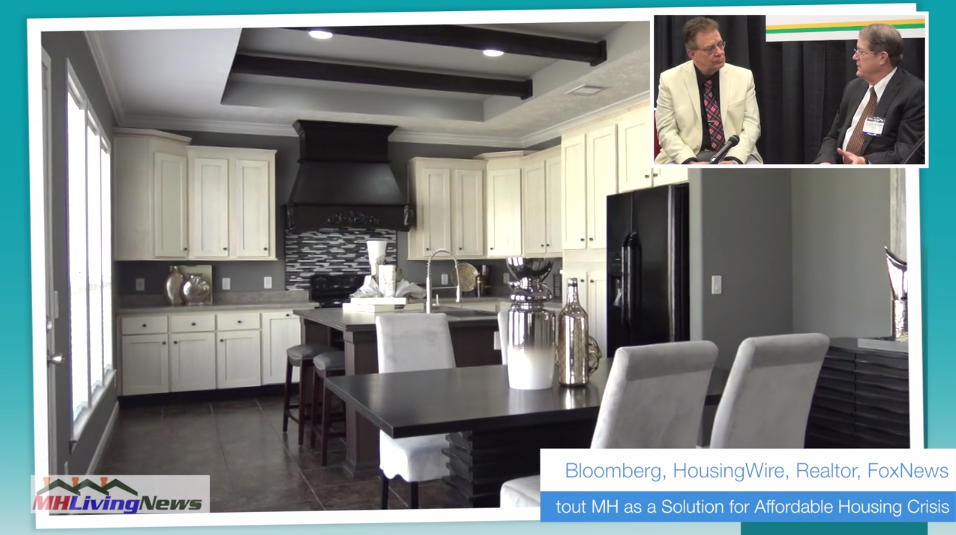
What’s the Catch?
Largely, what Bill Matchneer – formerly with the U.S. Department of Housing and Urban Development and the Consumer Financial Protection Bureau – said is the “Jay Leno” style stereotypical “stigma” of homes built in a factory, being improperly referred to as a trailer house.
“A manufactured home is not a motor home or a trailer, and although it is often called a “mobile home,” is not that either,” states the National Fire Protection Association (NFPA) in their report.
The NFPA found that federally-certified manufactured housing is safer than mobile homes, and is as-or-more safe than conventional construction.
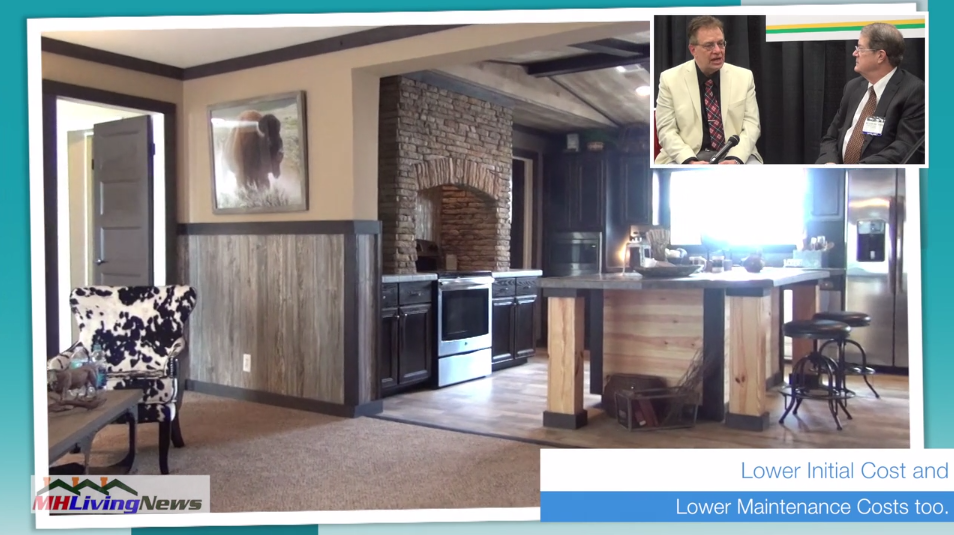
Night and Day
The facts are almost the polar opposite of how much of the public, policy advocates, media and others routinely grasp these engineered, greener-by-design marvels.
“Despite evidence that disproved misconceptions … negative stereotypes continued to influence local governments to impose regulatory restrictions on this type of

housing,” writes Lisa Tyler, PhD, of Bethel University.
“NIMBY – Not In My Back Yard – is alive and well,” says Kovach, “in part because for too long, industry professionals have just taken the old stereotypes and ribbing on the chin.”
“Do we put down the old cell phones that led to today’s smart phones? No. As a society,” the publisher and industry advocate rhetorically asks, “would we accept that same kind of close-minded prejudice towards a racial or ethnic group?”
“We also need to engage the media better,” Kovach added. “Reporters and editors want to get the facts and terminology right. In defining journalism, the American Press Institute stresses getting the facts and terminology accurately as part of their ideals and ethical standards. But if factory-built home professionals don’t take the time to explain the differences between the mobile homes of the past and the manufactured homes of the present, how can we expect journalists to get it right?”

“The terminology matters, because the terminology defines the construction standard,” says Steve Duke, executive director of the Louisiana Manufactured Housing Association.
In the face of disasters or the routine demand for quality affordable homes, “We have almost unlimited capacity,” John Bostick, president of Sunshine Homes, told MHLivingNews.com.
But what about those ‘horror stories?’
Bloomberg, Realtor, HousingWire and FoxNews are among the media outlets that have recently touted the value and evolution of manufactured homes from the trailer houses of the 1930s to the 1950s, to the mobile homes that haven’t been built in the U.S. for over 40 years.
Today’s manufactured homes are hardly mobile. They require specialized equipment and state licensed professionals, who permanently install the homes, much like conventional housing.
They can be sited and financed as real estate, but they can also be financed “home only” and placed on leased-land.
A Peek Behind the Front Lines of Affordable Housing Conflicts
Through
- interviews, commentary and studies by experts, homeowners and professionals,
- the insights from reports by award-winning consumer-affairs journalist Jan Hollingsworth,
- and Daily Business News posts by respected writers Joe Dyton and RC Williams,
it’s clear why a number of factory-built housing pros refer to MHProNews and MHLivingNews as “The Voice of Manufactured Housing.”
As part of MHProNews 7th anniversary celebration issue, the theme of the trials, tragedies and triumphs of contemporary entry-level and residential-style manufactured homes are examined.
The links to three dozen reports and interviews featured on MHProNews this month are in the column – Obstacles and Opportunities in Affordable Housing – October 2016, linked here. ##
(Editor’s Note: Adapted from a recent post on American Banking News.)
(Image credits – MHLivingNews, MHProNews, Inside MH).
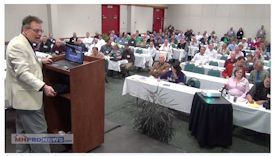
 manufacturedhomelivingnews.com Manufactured Home Living News
manufacturedhomelivingnews.com Manufactured Home Living News

